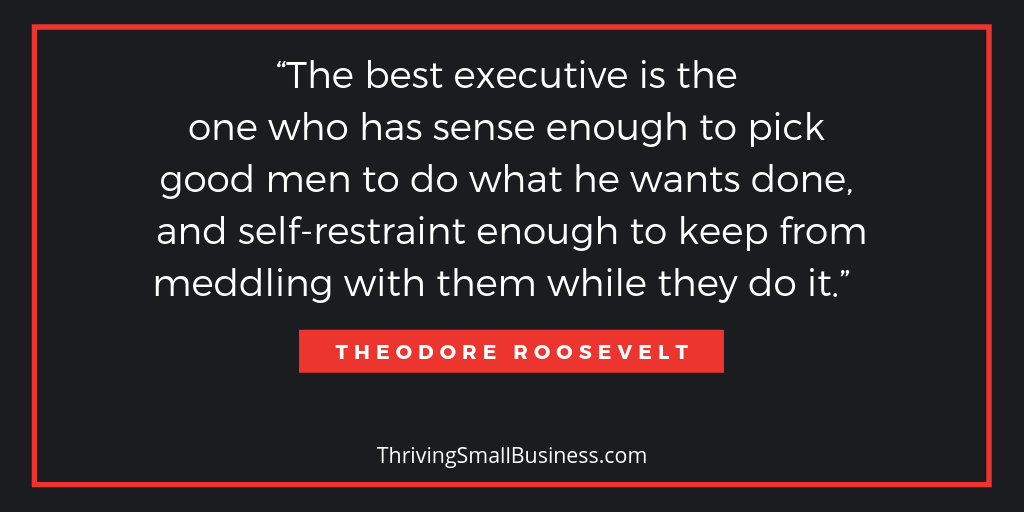13 Examples Of Empowered Employees
Estimated reading time: 6 minutes
Empowerment is a buzzword that we hear a lot about in leadership. A culture that embraces employee empowerment, understands the role workers have in taking care of the needs of the customers they serve.
Empowerment is defined as “the giving or delegation of power or authority; authorization; the giving of an ability; enablement or permission.”
Empowerment is based on the belief that employees have the ability – and want to take on more responsibility.
Empowerment is a way to give employees greater authority and responsibility for meeting customer needs and to provide employees with the means to make influential decisions.
It’s Everyone’s Job!
Everyone within an organization should be involved in managing customer expectations and improving quality.
Empowered employees understand their role in supporting the vision by taking care of the customers’ needs.
Joseph Juran (one of the early quality gurus) defined empowerment as “conferring the right to make decisions and take action.”
13 Examples Of Employee Empowerment
1. Management Support
As with anything successful in business, management support of empowerment is critical to its success.
Top management needs to be committed to supporting an employee-empowered culture.

This includes developing an organizational definition of empowerment that may include well-defined boundaries and management training on how to coach empowered employees.
For instance, first-time supervisors may need to be trained on how to support and empower employees to respond to customers.
2. Focus On The Customer
Successful organizations understand that it is the customer who pays the bills.
A focus on this important group is what makes great organizations.
Employee empowerment should be centered on the needs of the customer.
When employees are empowered to make decisions that help the customer, they contribute to the organization’s strategy and business objectives.
For instance, if an employee is dealing with an angry customer, they should have the tools and authority to make things right.
3. Front line Decision Making
Front-line employees get it. They deal with the day-to-day issues and know what customers want.
Eliminate the “let me ask my boss” barrier by granting decision-making power to front-line employees.
This delegation act may be as simple as allowing an employee to make service recovery decisions.
For instance, the Ritz Carlton is a classic model for service recovery in that front desk employees are authorized to make things right with a customer up to a certain dollar amount. No questions asked.
4. Ongoing Training
A culture of empowerment requires ongoing training.
Employees need to be trained to take on these new customer-focused responsibilities.
Empowered employees may be trained in the areas of customer service, problem-solving, negotiation, and conflict-resolution skills.
The more tools you give employees, the more confident they will be in making those off-the-cuff decisions that impact customers.
5. Access To Data
Data is king, and employees who understand company data are more equipped to influence those critical success factors.
Empower employees by giving them access to information and data that can be used in their decision-making process.
This information might include feedback from customer satisfaction surveys or customer comment cards that can help make informed customer-focused decisions.
For instance, if the comment cards share a consistent message that customers perceive employees as being rude, sharing this information will make employees more aware of how customers perceive their interactions.
6. Managers Trust Employees
Delegating decision-making can be difficult, particularly for new managers.
However, managers need to have trust and confidence that their employees will make the right decision.
A manager who second-guesses an employee’s decisions can impact an employee’s confidence in their decision-making ability.
The fact is employees won’t make the right call all of the time.
When they miss the mark, take the opportunity to coach and mentor them on a more appropriate response.
7. Boundaries Are Clearly Defined
Employees need to understand expectations and boundaries for decision-making.
They should understand what that means regarding their authority in any given situation.
For example, an employee may be given the authority and be empowered to correct a customer issue up to a certain dollar amount.
8. Employees Have Mentors
Mentors benefit everyone! Employees should be assigned a mentor to ask questions or give directions.
Mentors should be someone who has successfully done something that the employee is learning to do.
For example, if an employee is learning to be empowered to perform service recovery, their mentor should be someone who has learned the critical thinking skills to assess different situations and come to reasonable conclusions.
9. Employees Receive Positive Reinforcement
We all make mistakes when we first begin making decisions so it is important to provide good coaching and positive reinforcement.
We have all been there and can relate to an employee who hesitates to make a decision for the first time.
As employees develop their decision-making skills, coach with positive reinforcement as they maneuver the varying real-life scenarios.
10. Align Compensation With Customer Needs
It is important for employees to understand how what they do is tied to their compensation.
Align performance expectations around customer requirements and use the performance appraisal process to tie it to employee compensation.
This reinforces an employee’s motivation to make the right decisions.
11. Consider Social Style
Some people are good with people, while others are better behind the scenes.
Use social style testing and ensure you have the right personalities doing the right jobs.
Assess social styles to match natural employee strengths with job responsibilities.
Use the DISC or Myers Briggs assessment tool to help identify employee strengths.
Then, put employees in roles that complement their strengths!
12. Give Employees The Tools They Need
It is difficult for an employee to write on a piece of paper without a pen, and it is difficult for employees to input data if their computer is broken.
Some employees are very vocal about their needs, but others will work with aging or broken equipment and never speak up.
Give employees the tools and equipment they need to do their job. Fix broken equipment as soon as possible and look for ways to improve what the employee has to work with.
A commitment to assessing changing technology and equipment should be part of an organization’s strategy to support empowered employees.
13. Plan For Empowerment
As they say, if you fail to plan, you plan to fail.
Creating an environment to empower employees requires focus and planning.
Create a plan to foster a culture of empowered employees.
Implementation should have a timeline, and all aspects of the plan should be written so everyone understands the timing and process of implementation.

Organizations with strong empowerment models show that productivity and customer satisfaction improve due to an empowered culture.
So why wouldn’t you empower employees?






